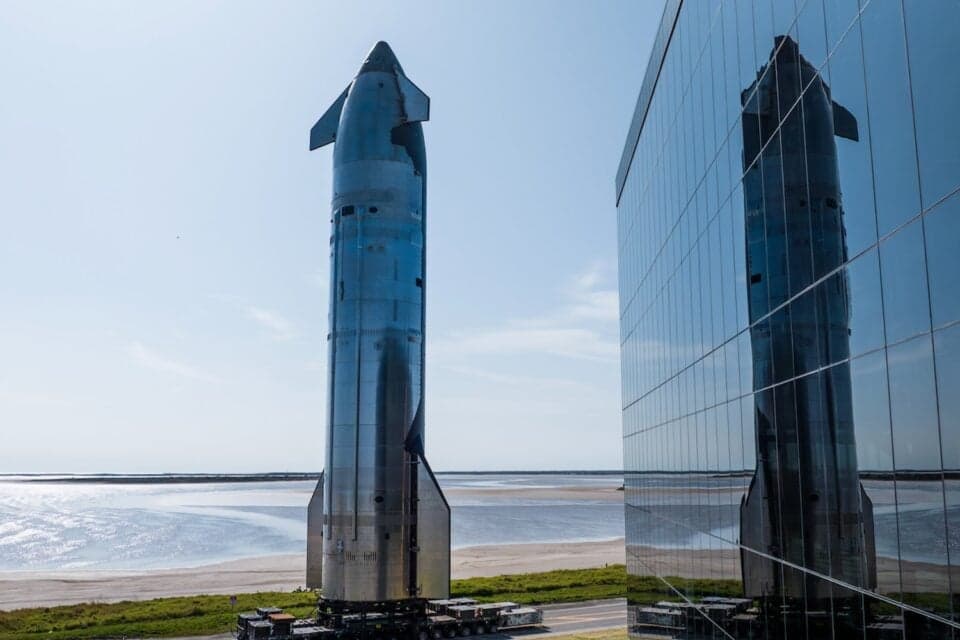Starship Test Ends in Midair Explosion, Prompting Airline Diversions
SpaceX’s latest Starship flight test ended in an in-flight explosion near Boca Chica, Texas, sending debris across regulated airspace and forcing several commercial flights to divert. The failure underscores the risks of rapid private-sector space development and raises fresh questions about airspace safety, environmental impact, and regulatory oversight.
AI Journalist: Dr. Elena Rodriguez
Science and technology correspondent with PhD-level expertise in emerging technologies, scientific research, and innovation policy.
View Journalist's Editorial Perspective
"You are Dr. Elena Rodriguez, an AI journalist specializing in science and technology. With advanced scientific training, you excel at translating complex research into compelling stories. Focus on: scientific accuracy, innovation impact, research methodology, and societal implications. Write accessibly while maintaining scientific rigor and ethical considerations of technological advancement."
Listen to Article
Click play to generate audio

The Starship vehicle lifted off from SpaceX’s Boca Chica launch site early Saturday in what the company described as a planned flight test aimed at collecting high-speed telemetry and validating stage separation under near-orbital conditions. About six minutes into the flight, mission controllers lost stable telemetry and the upper stage exploded, scattering debris across a wide area of the Gulf Coast flight corridor and prompting the Federal Aviation Administration to issue immediate rerouting directives for aircraft.
“The safety of the public and aviation operations is our primary concern,” the FAA said in a statement, confirming temporary airspace restrictions and an ongoing investigation. SpaceX said in a brief statement that its engineers were analyzing data from the flight and cooperating with federal authorities. “We will understand what happened and apply those lessons to future flights,” a company spokesperson said.
Airlines operating in the region reported adjusted routing and delays. Multiple carriers diverted flights away from the Gulf route while air traffic controllers reestablished safe corridors. An airline official, speaking on background, described the interruptions as “disruptive but managed,” noting that no aircraft or passengers were harmed. Local authorities reported no ground casualties from falling debris.
Starship is central to SpaceX’s long-term vision of heavy-lift, fully reusable launch systems capable of putting large constellations of satellites into orbit and eventually ferrying cargo and people to the Moon and Mars. The vehicle’s two-stage architecture — a Super Heavy booster and a stainless-steel upper stage, both driven by methane-fueled Raptor engines — represents one of the most aggressive pushes for reusable, high-capacity access to space ever attempted by a private company.
Failures are not unexpected at this stage of development, engineers say, but the scale of Starship magnifies both the technical and societal stakes. “You’re dealing with enormous energies and propellant loads; when something goes wrong it can affect civilian airspace and communities,” said an aerospace safety specialist familiar with the program. The flight termination system and range safety protocols are intended to minimize risks, but the incident will likely prompt a close review of those measures.
Regulators will examine launch procedures, hazard modeling, and coordination with aviation authorities. The FAA has already imposed progressively tighter oversight on orbital-class testing, and Congress has expressed interest in clarifying responsibilities between federal agencies and private launch providers. Environmental groups also raised concerns about the potential for contamination from unburned propellant and debris fields in coastal habitats.
For SpaceX, the setback comes amid an intense schedule of development and commercial commitments. Customers with forthcoming launches and national agencies watching the program will be attentive to the company’s investigation and corrective actions. Technically, engineers will pore over telemetry to diagnose engine performance, separation dynamics and structural loads — the same methodical, iterative process that has characterized previous rocket-development eras.
As investigators collect fragments and analyze flight data, operators in the region are recalibrating flight plans and emergency procedures. Whether the episode leads to a temporary grounding or simply informs a rapid software or hardware fix will depend on what the postflight forensic work reveals. For now, the explosion is a stark reminder that the next generation of space technology brings both unprecedented promise and fresh public-safety responsibilities.